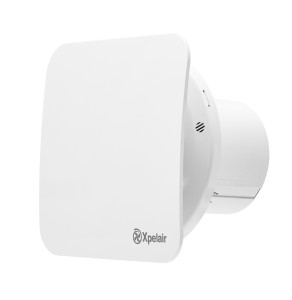Why indoor air quality should be top of the agenda for wholesalers

Lee Stones, category manager at Xpelair.
As concerns grow over the impact that airtight homes may be having on our health, Lee Stones, pictured, category manager at Xpelair, considers what steps could be taken to help create a healthy indoor environment – and why wholesalers could be missing a trick if they don’t know the facts…
It will come as no surprise to wholesalers that installing a good ventilation system has become as prevalent to landlords as efficient home heating.
With increasingly stringent Building Regulations, a drive towards energy efficiency and increased insulation options for existing properties, homes have become more ‘wrapped up’ than ever before. Whilst these measures are ideal for reducing heating bills, inadequate ventilation can increase Volatile Organic Compounds (VOCs), mould and damp within the home, contributing to poor IAQ.
And with many homeowners keeping windows closed to avoid additional heating costs, security issues or noise, it’s clear to see why the air quality in our homes is becoming an increasingly important health concern.
Together with a growing understanding of the importance of indoor air quality, this trend presents a huge opportunity for wholesalers.
When it comes to ventilation, it’s no secret that whole house ventilation wins in the efficiency stakes and for new builds it’s a no brainer to opt for whole house systems like Mechanical Extract Ventilation (MEV), or even more compelling, Mechanical Ventilation with Heat Recovery (MVHR), rather than less efficient intermittent fan options.
MVHR is ideal for new builds because it is suited to smaller homes, flats or apartments where insulation levels are high. Available as a centralised, whole-house system or single room units, this proven technology extracts moist, stale air from inside the property and replaces it with fresh, incoming air. Crucially, it uses heat from the outgoing air to warm the incoming air and high efficiency systems can warm air up to more than 90 per cent of the internal air temperature.
Systems inevitably run constantly in trickle mode and will boost when changes in humidity are recognised, for example when cooking on a hob or turning on a shower. Provided it is specified and installed properly, mechanical ventilation with heat recovery will also ensure housebuilders can meet Building Regulations for new properties under System Four of Building Regs Part F, whilst also improving SAP ratings.
Energy credentials
One of the most obvious benefits of MVHR is its energy saving potential and this is a key factor in the rise of its specification in the new build sector. Using waste heat from the outgoing, stale air to warm fresh, incoming air can reduce heating bills, of course, and for those housebuilders with a large stock, it can deliver significant carbon reductions.
For the best results, MVHR systems such as Xpelair’s new Stratum range can play a vital part in a whole-house approach to energy saving and carbon reduction. Together with other energy efficiency measures such as glazing upgrades, cavity wall insulation or heating system improvements, it can help to increase comfort, reduce bills and meet overall sustainability targets across a provider’s housing stock.
Constant Volume (CV) extraction fans like the Xpelair Simply Silent Contour CV offer decentralised Mechanical Extract Ventilation (dMEV) to meet System 3 of the Building Regulations, Part F. They operate 24/7 to constantly ventilate the property and ensure effective control of humidity, odours and mould growth. For housebuilders and landlords it provides the assurance that tenants can’t disable the appliance, reducing the risk of damage through condensation or mould growth.

In most cases, a CV fan will calibrate once it is switched on and the humidistat will recognise changes to this initial calibration. Xpelair’s Simply Silent Contour CV (pictured), however, represents a step change in CV technology. As the result of years of extensive product research and development, it is a highly intelligent solution which recognises its surroundings thanks to a unique, smart technology called Intelligent Adaptiflow Sensing.
Intelligent Adaptiflow Sensing uses an integral sensor located in the fan duct to sense changes in airflow, and adapts the fan speed intuitively to maintain a constant volume of extracted air.
Unlike other models which operate based on conditions at the time of installation, this sensor calculates and records the flow rate continuously, making hundreds of calculations each second to recognise consistent changes in airflow and adapt performance accordingly.
All the time, an integral datalogger also records the fan’s daily use so that data can be gathered and interpreted by a technician in case of dispute between tenant and housing provider.
All of this means a true constant volume solution for life. And of course, with such innovation comes added value for wholesalers.



